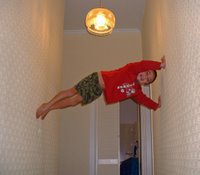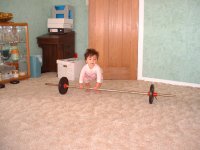Within half an hour of school finishing, the frantic rush of SUV's is over and the streets are as good as deserted of youth, other than a handful hanging around the local superette. Where have all the children gone? Where are all the teenagers? Its as if they have quickly scurried away to the safety of their burrows.
My impression is that the ACTIVE participants in outdoors activities - be they recreational or competitive - are mostly greying adults. When we compete in a running or mountain bike race nowadays, the junior grades are definitely in the minority. When hiking, it is mostly retirees who we meet along the way - rarely do we see youngsters.
I don't know about you but this trend is disturbing: It is disturbing because it signals we are witnessing the death of the traditional Kiwi outdoors lifestyle: It is disturbing because it signals deteriorating health as soft children get old: It is disturbing because it signals the end of New Zealand's proud tradition of excellence in outdoors sport. We are following in the footsteps of Australia.
Case in point: New Zealand once all but dominated middle and long distance running. No longer is this the case.
| # of Sub-2:10 Men Marathon Performers in 2013 | |
| Kenya | 79 |
| Ethiopia | 47 |
| Japan | 7 |
| Eritrea | 4 |
| Uganda | 3 |
| Morocco | 2 |
| South Africa | 2 |
| Qatar | 1 |
| USA | 1 |
| France | 1 |
| Brazil | 1 |
| Spain | 1 |
While there may be a strong genetic factor running through these ranks, I think the over-riding factor is the way children are being raised in developed countries. After all; if you argue it is the African gene, well there are millions of people of African descent in countries like the US, UK, France and Germany, to name some.
The real differences are less than genetic: A soft Developed World upbringing versus a hard and often desperate one in a 3rd World country. Plus a calorie rich - nutrient poor Western diet that produces fragile blobs, rather than lean, muscled athletes. Plus the ubiquitous computer and gaming console that results in loss of limb function, other than the thumb. Plus the motor car. Plus "Stranger Danger". Plus the quad bike on the farm. Plus the incredibly versatile hydraulic digger. Plus fear-mongering of the dangerous outdoors, including fear of the sun. Then there is "Helicopter" parenting, driven by an irrational fear of everything!
There are similar patterns, to do with poverty, within New Zealand with regards to the production of first class rugby players: In the Wellington Region I can't see many (if any) emerging players coming out of the affluent Central City suburbs: The wealth of new talent that keeps the All Blacks on top and which enriches the Australian NRL is from less affluent places like Wainuiomata and Porirua - and the Pacific Islands - not Kelburn or Brooklyn.
- Reject fast foods and get back to preparing foods daily from their basic ingredients.
- Reduce reliance on the motor car. Walk, walk, walk - and ride a bike most other times.
- Walk children to and from child care or school and regardless of the weather.
- When you go hiking - take the kids!
- Restrict computer and gaming console use: Just an hour after school, then outside to play.
- Insist on shared physical family chores such as weeding the garden.
- Encourage neighborhood play.
- Reject the "Stranger Danger" myth. The more people on the streets the safer it is for all.
- Accept that a child getting dirty and suffering the occasional lumps, bumps and bruises are part and parcel of a healthy upbringing.
- Streets need to be designed to be pedestrian and cycle friendly.
- Where and how we live needs to be physically designed so that people are brought together - not isolated in their private boxes.
- Work needs to be more family friendly so that parents have more time with children, in less of a rush and less exhausted.
- Fear sells (Better than sex). We need to reject the beating up of FEAR to manipulate behaviour, to sell products and to raise money (Think: The war on cancer).








 technorati tags: vitamin+d, tuberculosis, influenza, sunlight, meningococcal, sanitorium
technorati tags: vitamin+d, tuberculosis, influenza, sunlight, meningococcal, sanitorium


